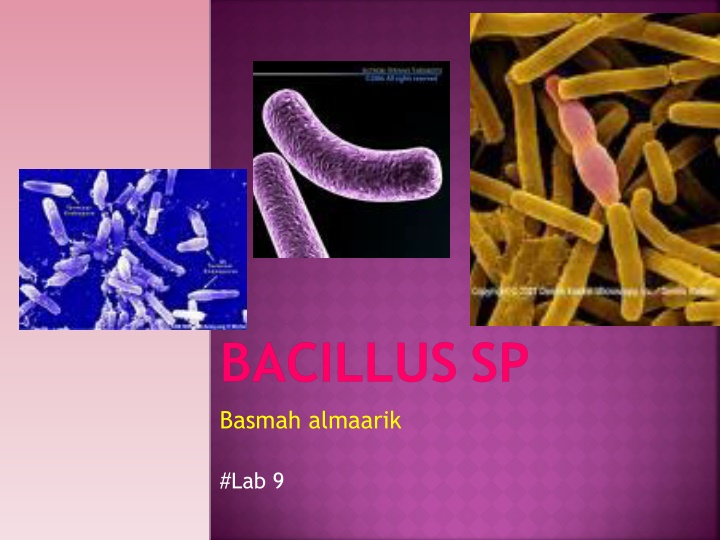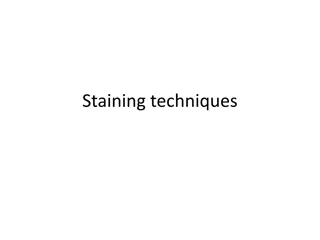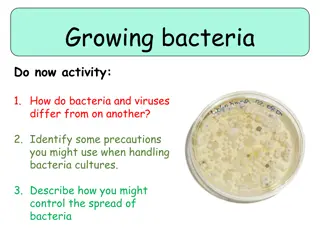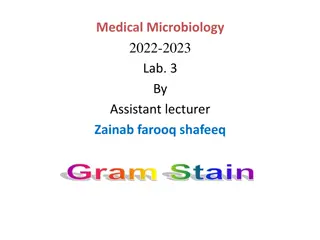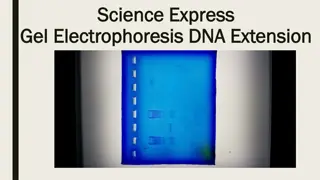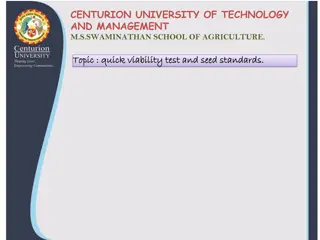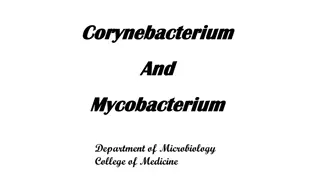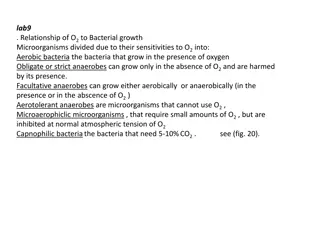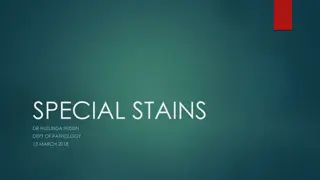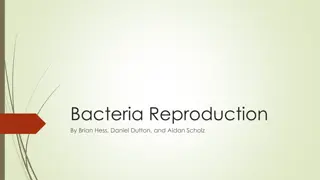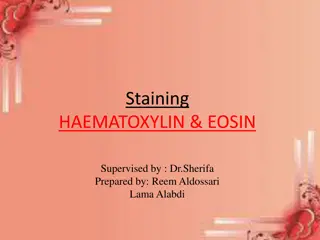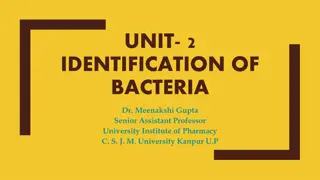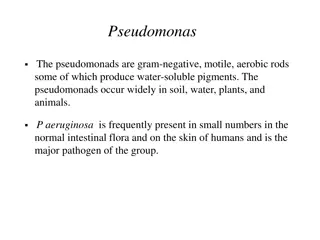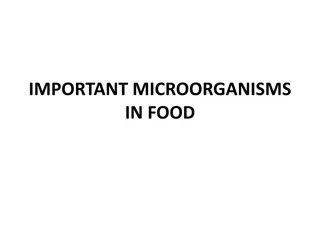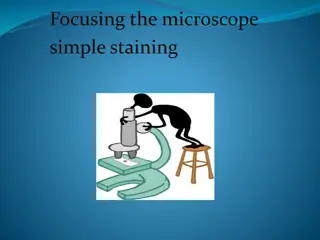Bacillus Bacteria: Types, Cultures, and Staining Techniques
Discover the diverse world of Bacillus bacteria, including species like Bacillus anthracis, Bacillus cereus, and Bacillus subtilis. Explore their characteristics, culture growth patterns, and staining techniques. Learn about the differences between motile and non-motile strains, capsule formation, and spore stains like Malachite Green. Uncover the unique traits of each Bacillus species, their pathogenicity, and the importance of special precautions when working with highly infectious strains. From Gram-positive bacilli to spore-forming facultative anaerobes, delve into the fascinating realm of Bacillus bacteria.
Download Presentation

Please find below an Image/Link to download the presentation.
The content on the website is provided AS IS for your information and personal use only. It may not be sold, licensed, or shared on other websites without obtaining consent from the author.If you encounter any issues during the download, it is possible that the publisher has removed the file from their server.
You are allowed to download the files provided on this website for personal or commercial use, subject to the condition that they are used lawfully. All files are the property of their respective owners.
The content on the website is provided AS IS for your information and personal use only. It may not be sold, licensed, or shared on other websites without obtaining consent from the author.
E N D
Presentation Transcript
BACILLUS SP Basmah almaarik #Lab 9
BACILLUS CULTURE Spore forming facultative anaerobic bacteria. Grow every where cause it produce spores. Grow in wide rage 12-45 C Spore formation is best seen in 25 30 C Grow on NA and BAP
SPECIES OF BACILLUS Bacillus anthracis: Causes anthrax; Mainly disease of sheep, cattle but human can be infected. Highly infectious and pathogenic . Need special precaution to work with. Bacillus cereus: Produce toxin that cause food-poisoning. Toxin is produced when the bacilli sporulate, usually in rice that have been stored in warm temperatures. Bacillus subtilis: Is not considered a human pathogen; it may contaminate food but rarely causes food poisoning
CULTURE OF BACILLUS B. anthracis Aerobic B. cereus Aerobic Large irregular colonies with wavy edges. (Ground glass appearance. ) Large irregular colonies with wavy edges. (Ground glass appearance.) Non haemolytic or slightly haemolytic Markedly haemolytic
CULTURE OF BACILLUS B. anthracis B. cereus
BACILLUS Non motile. Motile All bacillus species are motile with the exception of B. anthracis. Sensitive to Penicillin. Resistant to penicillin. All bacillus species are generally resistance to penicillin with the exception of B. anthracis. Capsulated Non-capsulated. B. anthracis B. cereus
SMEAR OF BACILLUSUS All Bacillus are Gram Positive Bacilli. Have spores; Inside or outside the cells Central or terminal B. anthracis Non-motile. Capsulated. B. cereus Motile. Non-capsualated.
SPORE STAINS Malachite Green (differential stain) Nigrosin Stain (negative stain) Ziehl-Neelsen Stianing 1) 2) 3)
MALACHITE GREEN STAIN Add drop of saline on a clean slide. Touch organism with loop and emulsify in saline. Spread, then fixe slide in hot plate. Flood slide with warm malachite green for 5 m Wash with water. Counter stain with safranin 3-2 m Wash then dray. 1. 2. 3. 4. 5. 6. 7.
MALACHITE GREEN STAIN Spores can be inside or outside of cells. Central or terminal
NIGROSIN STAIN Add drop of saline on clean slide. Touch organism by loop; emulsify in saline but do not spread. Add 1 drop of nigrosin and 1 drop of safranin. Mix all together by wooden stick. Then spread by the edge of another slide. Air dray and examin 1. 2. 3. 4. 5. 6.
1 drop negrosin NIGROSIN STAIN Drop of saline with loopful of organism Dark background Bacilli colorless Spores red 1 drop carbol fuschin Mix al together then spread like blood film and examine.
ZIEHL-NEELSEN STAIN Back ground blue. Bacilli blue Spores red.
